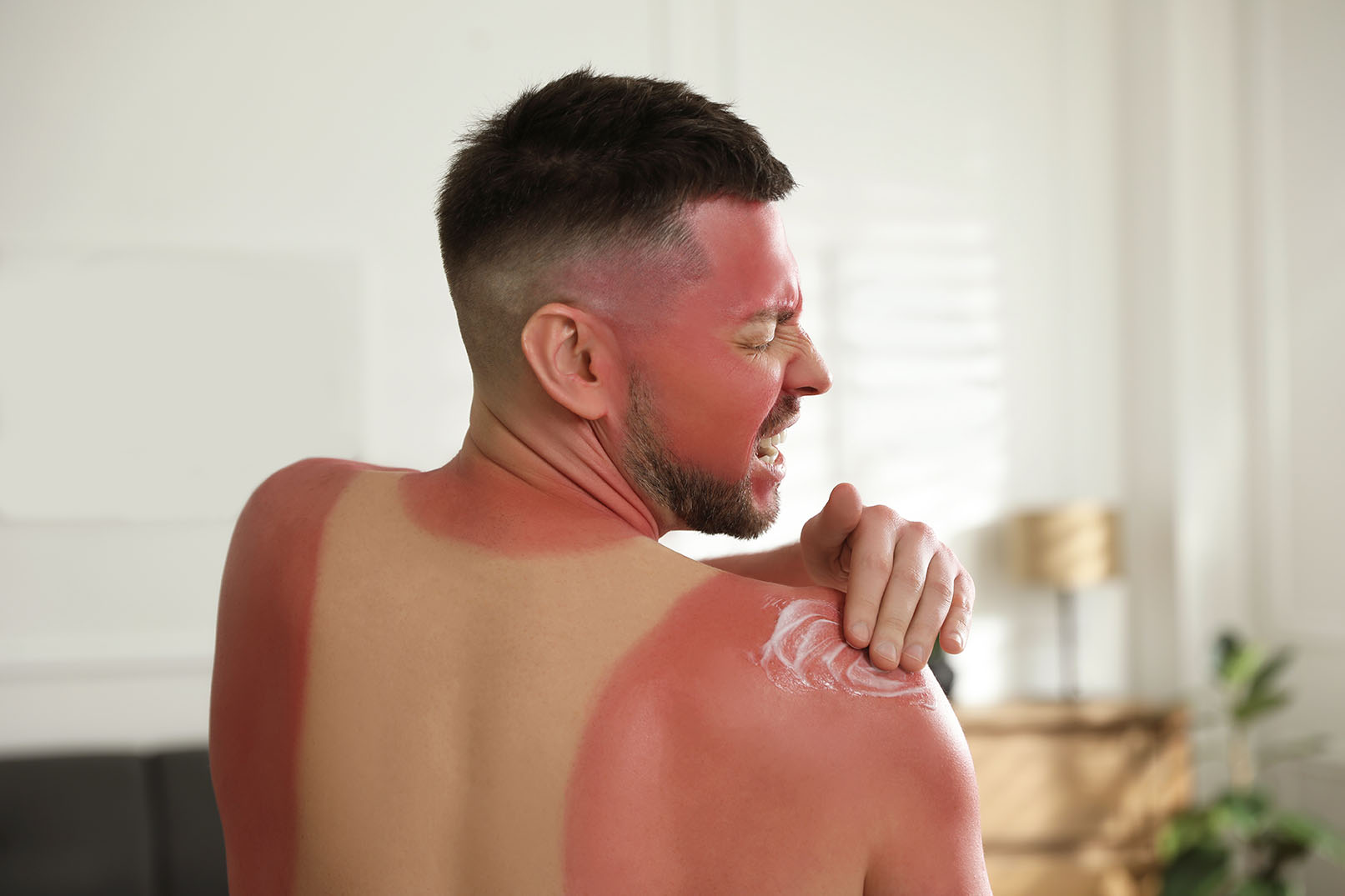
sunburn
Definition
Sunburn is a type of radiation burn caused by exposure to ultraviolet (UV) radiation from the sun or artificial sources such as tanning beds. UV rays can damage the skin's DNA, leading to cell death and inflammation. This is what causes the redness, pain, and swelling of sunburn.
The severity of sunburn depends on the amount of UV radiation exposure, the skin's sensitivity to UV rays, and the individual's age. Children are more likely to get sunburned than adults because their skin is thinner and more sensitive.
There are a number of things that can be done to prevent sunburn, including:
- Wearing sunscreen with an SPF of 30 or higher
- Wearing protective clothing, such as a hat and sunglasses
- Staying in the shade during the middle of the day
- Avoiding tanning beds
If you do get sunburned, it is important to cool the skin and prevent further damage. This can be done by taking a cool shower or bath, applying aloe vera gel, and drinking plenty of fluids. In severe cases, medical attention may be necessary.
How can the word be used?
The lifeguard warned the swimmers about the risk of sunburn.

Different forms of the word
Noun: sunburn.
Adjective: sunburned.
Verb: to sunburn.
Etymology
The word "sunburn" comes from the Old English words "sun" and "brennen", which mean "to burn". It was first used in English in the 14th century.
The word "sunburned" is the adjective form of the word "sunburn". It means "affected by sunburn".
The word "to sunburn" is the verb form of the word "sunburn". It means "to cause someone to get sunburned".
Question
What can you do to prevent sunburn?
AQA Science Exam Question and Answer
Question:
Describe the science behind sunburn and its effects on the skin. Explain how ultraviolet (UV) radiation causes sunburn, the role of melanin in skin protection, and the importance of preventive measures.
Answer:
Sunburn is a common skin condition resulting from overexposure to ultraviolet (UV) radiation from the Sun or artificial sources like tanning beds. UV radiation damages the DNA within skin cells, triggering a series of physiological responses that lead to inflammation and the characteristic redness and discomfort associated with sunburn.
Melanin, a pigment responsible for skin, hair, and eye colour, plays a crucial role in protecting the skin from UV radiation. When the skin is exposed to UV rays, melanin production increases to absorb and dissipate the radiation as heat, shielding the DNA from damage. People with darker skin tones generally have more melanin, providing them with a natural defence against sunburn.
Preventive measures are essential to avoid sunburn. Wearing protective clothing, like long-sleeved clothing and hats, and seeking shade during peak sunlight hours can reduce UV exposure. Applying sunscreen with a high sun protection factor (SPF) that provides both UVA and UVB protection further helps shield the skin.